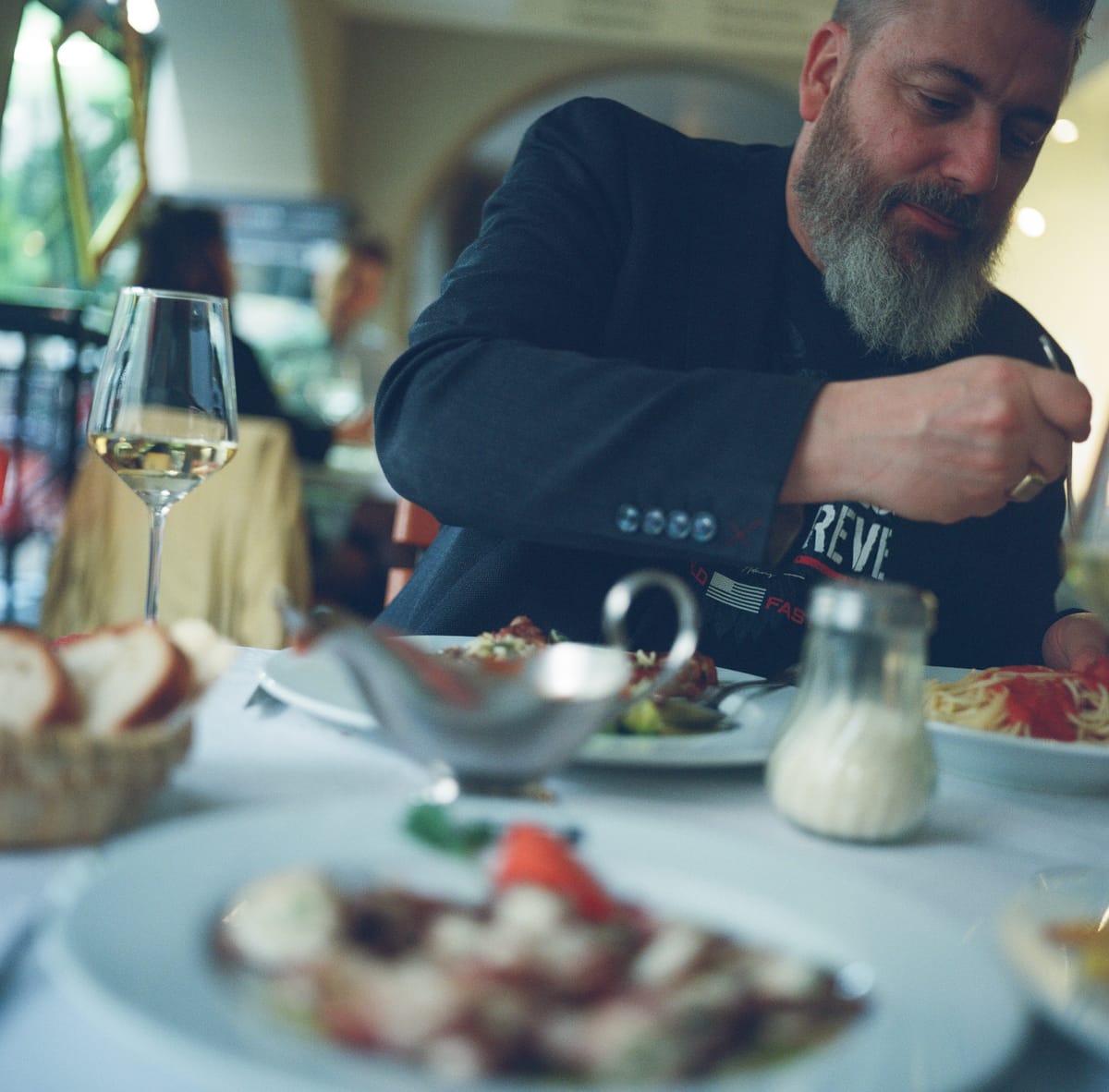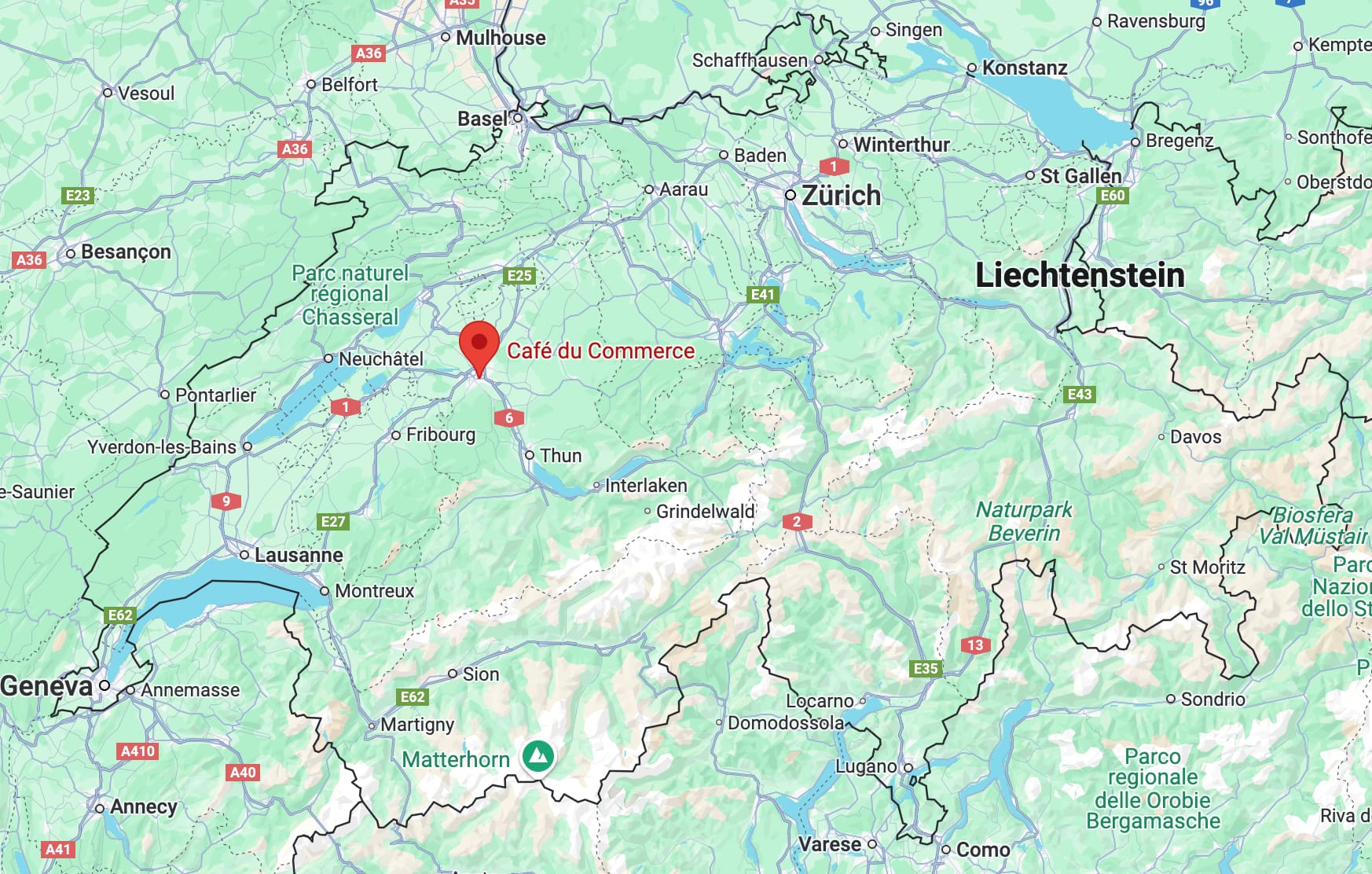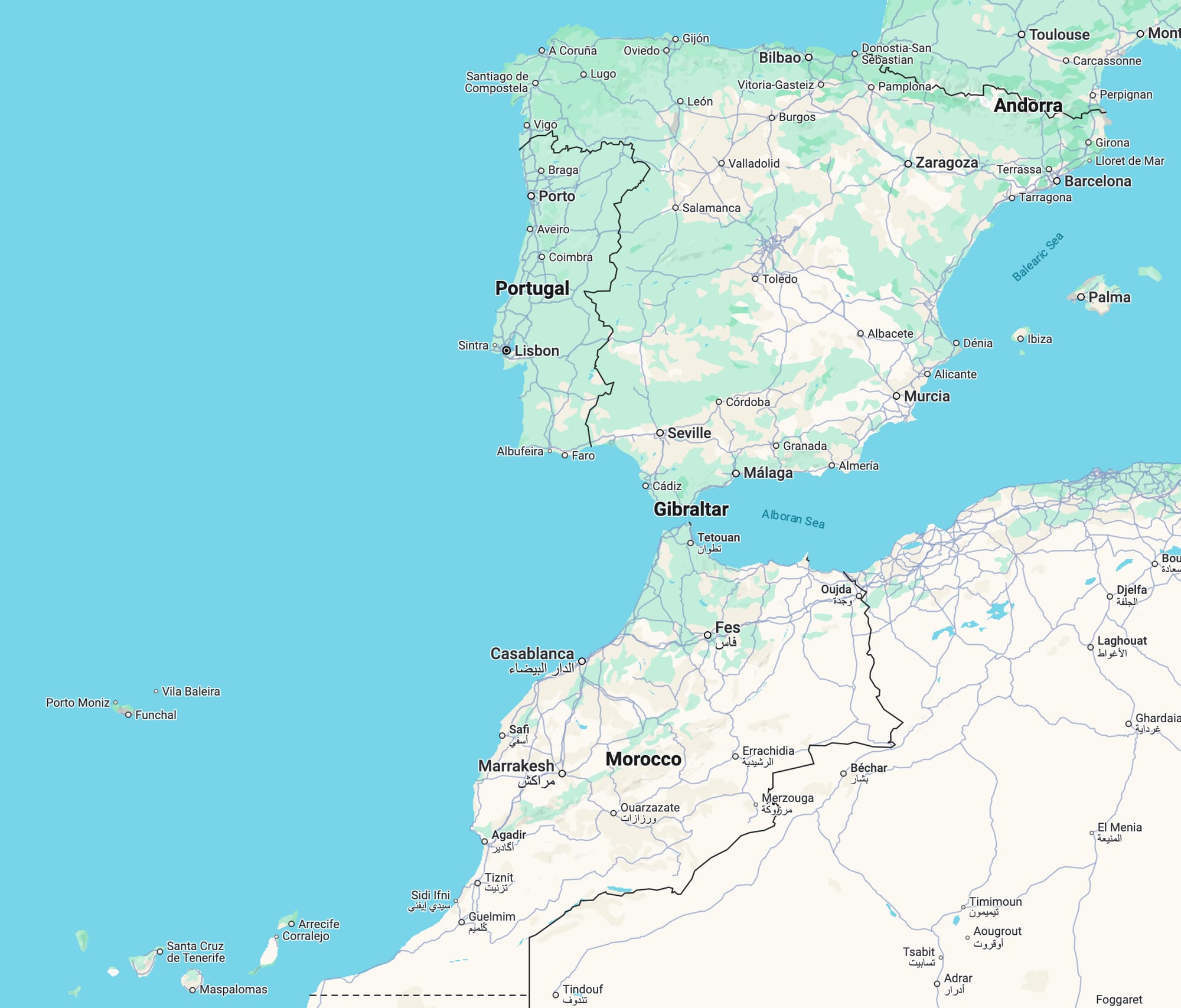Where to eat SPAIN 🇪🇸 Bern: Café du Commerce
Café du Commerce is one of these old Franco-era exile establishments that used to dot major cities in Western Europe and New York... Café du Commerce makes Spanish food as it is meant to be, with simplicity and classical flavors, elevating high quality ingredients...

Café du Commerce
Gerechtigkeitsgasse 74, Bern

Published July 8, 2025 · by Amanda Rivkin Häsler
What we ordered: For two people, one jamón ibérico plate as an appetizer and for entrees, one chuletón de ternera served with a side of spaghetti and tomato sauce and one order of pulpo a la plancha which came with fries. To drink, we ordered half a liter of Mont Sur Rolle Belletruche followed by a bottle.
Cost: 170.50 CHF / €182 / $213
Café du Commerce is one of these old Franco-era exile establishments that used to dot major cities in Western Europe and New York. A bit like walking into a bar in a small town in Castilla La Mancha, these restaurants and bars, often with tapas under a glass case at the bar – though not at Café du Commerce – were the second home away from home to a whole generation of exiles.
These exiles were not unlike the infamous man of La Mancha, Don Quijote, in their day because in a sense they fought the law – or humbly disagreed with it – and in Franco’s time, he was the law and won, until his death. Many of these exile Spanish restaurants have folded with their owners’ mortality or when the possibility of returning to a free, post-Franco Spain beckoned them back. Others simply lost their leases as neighborhoods gentrified and renovated, such as is the case with the old Little Spain of New York’s West Village on West 14th Street.
In some of the older towns and villages, where life has changed little regardless of politics and the ebb and flow of time and trends, such restaurants as Café du Commerce remain. Dark wood, white walls, a few humble items of décor that reflect on a national spirit and character and perhaps some homage to the peculiarities of a country, like bullfighting, are the simple adornments marking place but not passage of time.
As a standard of the exile Spanish restaurant genre, Café du Commerce does what all the old Spanish establishments do well. The focus is not on nouveau cuisine or technique, like the foams and reconstruction of classic items that characterize the legacy of Catalan chef Ferran Adrià in the new century. Instead, Café du Commerce makes Spanish food as it is meant to be, with simplicity and classical flavors, elevating high quality ingredients with just a bit of a note that is a nod to each chef’s special preparations.

As a starter, we had the absolute classic of every Spanish table, jamón. For those unfamiliar, in kitchens across Spain, including in private homes, a leg of jamón often rests on a counter or the edge of a table in a jamonero or jamón stand, covered in a light cheese cloth or thin woven knit cloth, a thin knife is usually stashed nearby, at the ready for slicing the perfect cut.
No doubt Café du Commerce has one such jamonero with a great leg or pata of jamón at the ready behind the scenes (as it is not visible on the bar at the front of the house). Cut a bit thicker than usual, the high quality jamón at Café du Commerce was truly like butter. It came with a bit of bread, though unnecessary at first, a few bites and the butteriness certainly left the palate open for a bit of bread.
For entrees, we similarly opted for two classics: a chuletón de ternera and pulpo a la plancha. Ternera is veal or baby lamb, but the chuletón, meaning extra-large, bone-in rib cut meant it was anything but a baby in size. Cooked on the grill, it was juicy and fork tender until it came to the meat left on the bone, which Georg then took in his hands and ate as if it were ribs anywhere else – a very cute spectacle.

While the options included potatoes, fries, rice or spaghetti as a side, spaghetti being the least Spanish side of those options, Georg opted for it as he is truly a pasta monster. The tomato sauce came on the side in a gravy boat to be poured on at leisure and combined with the spaghetti. While not entirely Spanish, restaurants must adapt to local flavors and customer favorites for survival. Switzerland is very much a pizza and pasta country as a neighbor of Italy and one whose own national dishes include such basic classics as melted cheese (fondue) and shredded potatoes (rösti).
The pulpo was really great and Café du Commerce is a strong place to order such a dish, though do not expect it a la gallego here, neither over potatoes or with pimentón. Served thinly sliced with a sauce of olive oil and parsley and a bit of garlic, it was soft as it should be and perfectly cooked in fact.
The fries were the small, eat many at once with a fork variety. While I asked for a side of alioli which would have been perfect, they said they were unfortunately out and brought mayonnaise instead. In the end, Georg was absolutely a member of the clean plate club, while I finished the pulpo but left a good half plate of fries.
To drink, we could have ordered Spanish or Portuguese wine but opted for a local bottle instead from the vineyards of an old Bernese blue blood family. One of the sons is a bit of an old city of Bern character and an acquaintance of Georg. Once we were dining with my father and this man came up to introduce himself, a bit drunk and declared he was blue blood and a bit of a degenerate for it to my father, who replied most graciously and hilariously, “Well, enjoy it!”

How to get to Spain from Switzerland:
By car, it is a 15-hour journey across France from the Swiss capital Bern to the Spanish capital Madrid.
By rail, it can be under 14 hours, however many connections are required in Geneva, Lyon and Barcelona (and perhaps a few more places in between) before finally arriving in Madrid.
By plane, Air Europa, Iberia and Swiss Air all offer nonstop flights between Zürich and Madrid. From Geneva, only Iberia flies direct to Madrid.
Spain is an enormously popular destination and especially known for its beaches, with Madrid lacking Mediterranean or Atlantic access. There are any number of routes and connections between the major Swiss airports and wherever you might like to go in Spain, including numerous charter flights that also fly direct to the Balearic islands in the Mediterranean and the Canary islands off the coast of West Africa.
How many Spaniards are in Switzerland: More than 100,000
Distance between Bern and Madrid: 1,550 km
Distance from Café du Commerce to Madrid: 1,550 km
Learn how to make Spain's national dish, tortilla de patata, and about its origins.
Follow our social media pages @swissglobaldining on Instagram, TikTok and YouTube